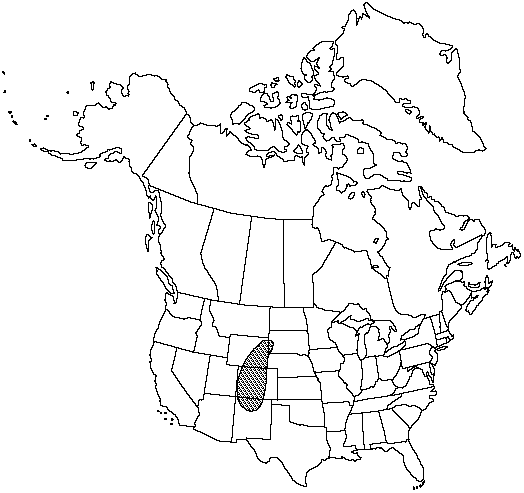Polypodium saximontanum
Contr. Univ. Michigan Herb. 19: 47. 1993.
Stems often whitish pruinose, slender, to 6 mm diam., acrid-tasting; scales weakly bicolored, lanceolate, contorted distally, bases and margins light brown, sometimes with dark central stripe, margins often coarsely dentate. Leaves to 25 cm. Petiole slender, to 1.5 mm diam. Blade oblong to linear, pinnatifid, usually widest near middle, to 4 cm wide, somewhat leathery; rachis sparsely scaly to glabrescent abaxially, glabrous adaxially; scales lanceolate-ovate, usually more than 6 cells wide. Segments oblong, less than 12 mm wide; margins entire to crenulate; apex rounded to broadly acute; midrib glabrous adaxially. Venation free. Sori midway between margin and midrib to nearly marginal, less than 3 mm diam., circular when immature. Sporangiasters present, usually less than 40 per sorus, heads with a few glandular hairs or rarely without glands. Spores more than 58 µm, tuberculate, surface projections more than 3 µm tall. 2n = 148.
Phenology: Sporulating summer–fall.
Habitat: Cracks and ledges on rocks, apparently confined to granitic substrates
Elevation: 1800–3000 m
Distribution

Colo., N.Mex., S.Dak., Wyo.
Discussion
Polypodium saximontanum is an allotetraploid species whose progenitor diploid species are P. amorphum and P. sibiricum (M. D. Windham 1993). Prior to its recognition as a distinct species, collections of P. saximontanum were variously referred to P. montense F. A. Lang (= P. amorphum), P. hesperium, and/or P. virginianum. In addition to its separate geographic range, P. saximontanum can be distinguished from P. virginianum by having narrower leaves and a reduced frequency of glandular hairs on its sporangiasters. Polypodium saximontanum also has a separate range from P. amorphum and has spores with large (greater than 3 µm tall) projections. Although P. saximontanum overlaps in range with P. hesperium, the latter species has no sporangiasters. Tetraploid hybrids of these two species have misshapen spores.
Selected References
None.